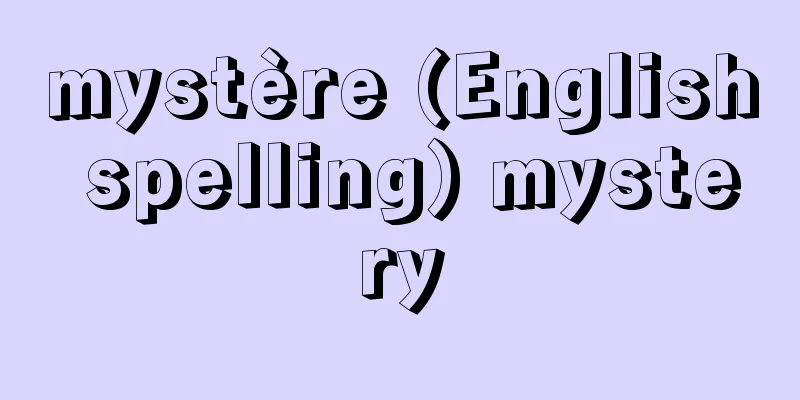Tsuchikura - Doso

|
It refers to pawnbrokers and financial businesses in the Middle Ages, and is also called "dokura" or "tsuchikura." In the Heian period, it simply referred to a warehouse with clay walls, but as financial businesses had dokura to store collateral, it came to refer to financial businesses instead of the previous "kashiage." An early example is in the 1234 (Bunreki 1) article on a fire in the "Meigetsuki," which says, "The number of dokura workers is unknown," but the "Kenmu Shikimoku," established in 1336 (Engen 1, Kenmu 3), says, "It is necessary to establish dokura for unlimited coins," and it became common to use the term from around this time. During the Nanboku-cho period, there were 335 dokura in Kyoto, of which 280 were under the control of Mount Hiei, known as "dokura in the style of a mountain monk." There were 35 in Sakamoto, and about 200 in Nara. Many of the storehouses were occupied by monks from temples such as the Sanmon Gate, and by priests from Hiyoshi Shrine and Kasuga Shrine, but in the Muromachi period, the number of Zen monks lending out money under the name of "shido-sen" (shrine money). Many also worked in the brewing industry, such as sake and miso makers. In 1393 (Meitoku 4), the Muromachi Shogunate issued a law entitled "Articles on Taxes on Storehouses and Houses Scattered in the Land around Kyoto," imposing storehouse taxes, but feudal lords, temples and shrines also imposed storehouse taxes, making it a major source of revenue. During the Sengoku period, the autonomous city of Oyamazaki also imposed storehouse taxes. The business of the dogura was, first of all, to lend money using movable and immovable property as collateral, with interest rates set at no more than 4% per month by shogunate regulations and no more than 2% per month for shrine money, although of course higher interest rates were also seen. They also carried out a deposit service known as gosen (a sum of money) and safekeeping of treasures. Neither the Imperial Court nor the shogunate had their own treasuries, so the Imperial Court appointed official dogura, known as the Kinri Gokura (Kinri Mikura), and the shogunate appointed official dogura, known as the Kubo Gokura (Kubo Gokura), to handle finance, the receipt and disbursement of tributes, the management of treasures, and the management of assets. Dogura were always the target of tokusei ikki (rebellions against the government), so dogura armies were organized in Kyoto to fight against the uprisings. During the Sengoku period, dogura, which were like merchants for the government, were granted the right of exemption from tokusei and were protected. [Haruko Wakita] Source: Shogakukan Encyclopedia Nipponica About Encyclopedia Nipponica Information | Legend |
|
中世の質屋、金融業者をいい、「どくら」「つちくら」ともよばれる。平安期には単に土壁塗りの倉庫をいったが、担保物件の保管のために金融業者が土倉をもったため、前代の借上(かしあげ)にかわって金融業者をさすようになった。早い例は、1234年(文暦1)の『明月記(めいげつき)』の火事焼失の記事に「土倉員数を知らず」とあるが、1336年(延元1・建武3)に定められた「建武(けんむ)式目」には「無尽銭(むじんせん)土倉を興行せらるべき事」とあり、このころから一般化して使用されている。南北朝期の京都では土倉は335軒を数え、そのうち280軒が「山門気風の土倉」といわれる比叡山(ひえいざん)支配下のものであった。坂本には35軒、奈良には約200軒といわれた。土倉には山門をはじめとする寺院の僧侶(そうりょ)や、日吉(ひえ)社、春日(かすが)社などの神人(じにん)が多かったが、室町期には、禅宗僧侶が祠堂銭(しどうせん)と称して貸付を行うものが増加した。また酒屋、味噌(みそ)屋など醸造業と兼業するものも多かった。室町幕府は、1393年(明徳4)に「洛中辺土散在土倉并洒屋役条々」という法令を出し、土倉役を課したが、大名、寺社も同様に土倉役を課して大きな財源とした。戦国期には自治都市の大山崎(おおやまざき)も倉役を課している。 土倉の業務はまず、動産・不動産を担保物件として金銭を貸し付けることで、利子は幕府規定で月4分以下とされ、祠堂銭は月2分以下となっているが、もちろんそれ以上の高利もみられた。そのほか、合銭(ごうせん)とよばれる預金業務や、財宝の保護預かりも行った。朝廷も幕府も府庫をもたず、朝廷は禁裏御倉(きんりみくら)、幕府は公方(くぼう)御倉という御用の土倉を任命し、金融、貢納物の出納、財宝の管理、財産管理を行わせた。土倉はつねに徳政一揆(とくせいいっき)の対象となったため、京都では土倉軍が組織されて一揆と戦った。戦国期には御用商人的な土倉は徳政免除権を許されて保護された。 [脇田晴子] 出典 小学館 日本大百科全書(ニッポニカ)日本大百科全書(ニッポニカ)について 情報 | 凡例 |
Recommend
Shibi
A decoration placed on both ends of the ridge of ...
Selection of favorites - Kisenshiki
A book on waka poetry from the mid-Heian period. I...
Zygmunt III Waza (English)
…[Miyajima Naoki]. … From Poland ...However, with...
Arab [species] - Arab
A breed of horse. A riding horse native to the Ara...
Allegorical capital - Guiichiutou
…These capitals were inherited by Islamic archite...
Large gong - Daishouko
〘Noun〙 (also "taishouko") One of the per...
Marie disease
This disease was described by the French neurologi...
Direct mail
It is translated as direct mail advertising and is...
Horse fly
…If we had to say, the word “horse fly” could ref...
"Fishing Light Song" - Gyokokyo
...However, in the 1930s, in response to the star...
Buhen
… [Yasuo Takahashi] [Western] Moats surrounding c...
Ekaterinburg
…The capital of Sverdlovsk Oblast, the westernmos...
Shamshi-Adad I
King of Assyria. Reigned 1813-1781 BC. The last 11...
Republic of Ireland - Ireland
A country that occupies most of the island of Irel...
Gingoitesu - Gingoitesu
…Also read as Ginkgoaites. The name of the organ ...




![Motosu [town] - Motosu](/upload/images/67cd04fa88976.webp)




